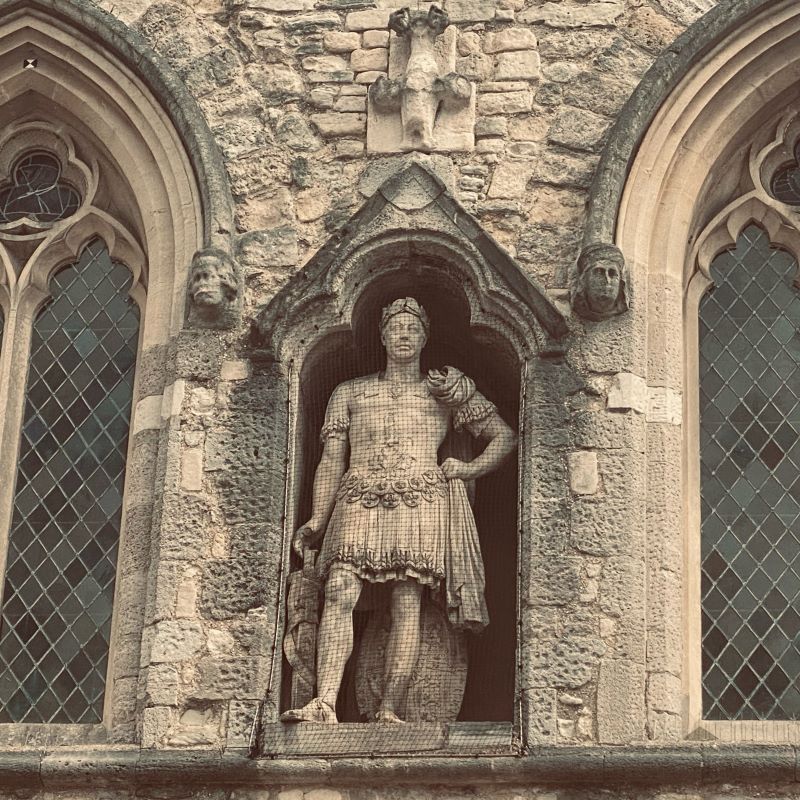by Martin Brisland.
The statue on the south face of Southampton’s Bargate is of King George III (1738-1820). pictured top. His head is on the body of the Roman Emperor Hadrian, a common practice for statues at the time. It was based on Hadrian’s statue in the British Museum. The statue is still in excellent condition well over 200 years later.
It dates from 1809 and was presented by the 2nd Marquess of Lansdowne. His father had been Prime Minister and his half-brother became Chancellor of the Exchequer. Landsdowne spent the final years of his life in Southampton, then at the peak of its Spa Town popularity. He built a mock castle and there is still a Lansdowne House in Castle Lane.
The Coade stone statue was placed on the south front of the Bargate, replacing a wooden statue of Queen Anne which was is still kept inside the Bargate.
The statue was made in a factory owned by Eleanor Coade (1733 – 1821) a British businesswoman who succeeded in a male dominated world.
She became well known for manufacturing sought after statues and other ornaments made of high-quality, durable, weather-resistant, Lithodipyra or Coade stone.
Eleanor combined high-quality manufacturing and artistic taste, together with entrepreneurial, business and marketing skills, to create the overwhelmingly successful stone products of her age. As was customary for unmarried women in business at the time, she used Mrs as her title.
In 1769, Eleanor Coade, then 36, acquired a struggling artificial stoneware business on a site now occupied by the Royal Festival Hall and lived there. The ceramic product was marketed as “Coade’s Lithodipyra”, for the next 50 years.
In 1784 she inherited Belmont House in Lyme Regis. Author John Fowles who wrote The French Lieutenant’s Woman lived there from 1968 to 2005.
In around 1780 Coade was commissioned by King George 111 to make the Gothic screen of St. George’s Chapel at Windsor Castle.
In 1784 she created a comprehensive catalogue of 746 designs produced by the company. It included statues; busts; whole panels; friezes; coats of arms; balusters; furniture; interior ornaments and more.
She also opened a large showroom, Coade’s Gallery, at the end of Westminster Bridge Road to display her products.
Coade stone works also include the original Twinings tea shop on the Strand; the South Bank Lion on Westminster Bridge; the Nelson Pediment at the Royal Naval College at Greenwich; the statue of George 111 on the seafront at Weymouth and the Royal Pavilion, Brighton.
The statue of Prince Albert that once stood by the east wall of God’s House Tower in Southampton is also thought to have been made with Coade stone.
The remarkable Eleanor Coade, a devout Baptist, died in November 1821 in Camberwell, London. Her obituary notice declared her ‘the sole inventor and proprietor of an art which deserves considerable notice’.
She is commemorated by the horse-mill stone used in her factory, placed under Westminster Bridge by the footpath to Royal Festival Hall, which now occupies the site of her premises.
- In Common is not for profit. We rely on donations from readers to keep the site running. Could you help to support us for as little as 25p a week? Please help us to carry on offering independent grass roots media. Visit: https://www.patreon.com/incommonsoton

